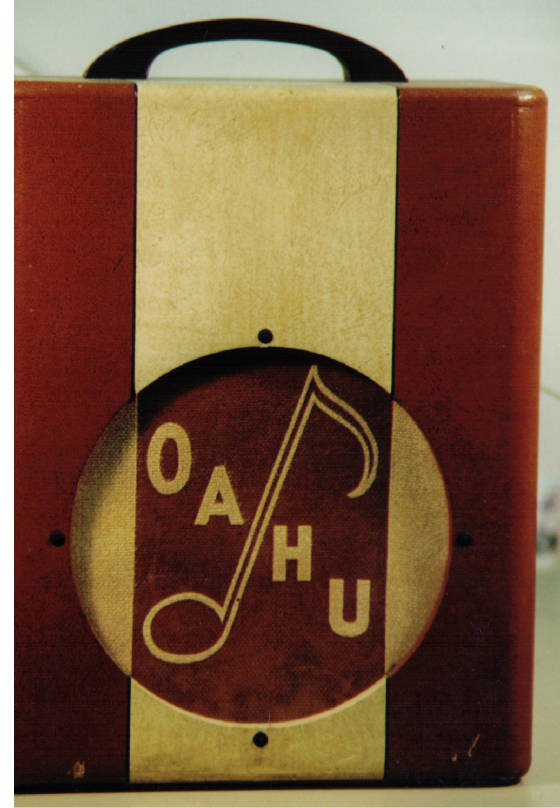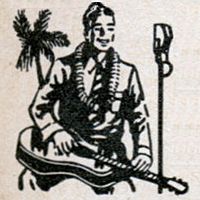Which Amplifier Should I Use?
By David J. Stewart | Updated November 2014
 Amps are mostly personal preference like
everything else. If you like simplicity, then stay away from digital amps.
Today's digital amps are incredible powerful in their ability to manipulate
a guitar's signal, but you often have to deal with layers, sub-layers, and
sub-layers to sub-layers of programming algorithms. No thanks! Besides, I
think they sound terrible in general. It's too easy to go overboard with
digital signal processing and then your sound is ruined.
Amps are mostly personal preference like
everything else. If you like simplicity, then stay away from digital amps.
Today's digital amps are incredible powerful in their ability to manipulate
a guitar's signal, but you often have to deal with layers, sub-layers, and
sub-layers to sub-layers of programming algorithms. No thanks! Besides, I
think they sound terrible in general. It's too easy to go overboard with
digital signal processing and then your sound is ruined.
I once has a Fender Mini Mustang battery-powered amp, which was nice because you could use the accompanying free program called Fender Fuse to custom shape your tone. The amp has a 1965 Twin Reverb amp simulator. The amp/software comes with a Lexicon reverb, which I think sounds very nice. If you buy a Mustang amp of any size, I believe the Fender Fuse software CD comes standard. The amp connects via USB to your computer. Don't make the mistake that I made and mix up your cables. I accidentally used a USB power cable one day and it wouldn't show an amplifier connected to my computer. Cable types do matter. Although a nice amp, I gave it away. There's better amps I think.
For larger amps I personally like solid state over digital. I actually recorded my 2000 Hawaiian Album using a Line 6 Spider amp (which simulates a bunch of amps). I got rid of the amp because it lacked tone. I've learned the hard way over the years. Digital amps lack the warmth of tube amps. Solid State (transistor) amps are much better than digital in my humble opinion and there are some really great dedicated steel guitar amps made by Peavey and Fender. Jerry Byrd used to say that today's musicians just make sound, but they don't communicate through their music. Jerry's so right! Lloyd Green said that ultimately tone is the emotional connection between musician and listener...
“The reason tone is so important is because I think ultimately that’s what is the emotional connection when you’re playing music to what people are hearing. If they hear good tone, there is something that strikes a resonant note in the soul. You can be playing the greatest stuff in the world, but if it doesn’t have good tone, there’s something that’s not making a connection. I think that’s what people really hear first. —Lloyd Green, interview 2001, Steel Guitar Rag magazine.
Lloyd Green and Jerry Byrd both used the Fender Twin Reverb amplifier throughout much of their career (Lloyd more than Jerry). It's a heavy amp, but has a classic sound. Of course, the twin reverbs are notable for their rich reverb. Lloyd actually used an amp head and played through ONE 15" JBL speaker cabinet. He used the other 15" speaker as a backup, rotating usage on and off between gigs to keep them both in working condition. He did the same with his two ShoBud volume pedals to keep them from becoming scratchy. Pedals become scratchy when unused. Goodrich sells a new pot, which is really good and less prone to scratchiness.
There are actual old-style vacuum tubes inside tube amps that glow orange and heat up. The Fender Twin Reverb is in fact a tube amp! Tube amps process the guitar's signal ANALOG instead of DIGITAL. Think of digital in terms of 1's and 0's (on or off). That's what digital is. Your guitar's signal will be chopped off when the volume is peaked. That's horrible for the quality you want. Yes, the Fender Twin Reverb is a tube amp. I used to have a Fender Hotrod Deville 4 x 10 (four 10" speakers), which was really nice for pedal steel guitar. There's a little “boost highs” button that sounds awesome when you press it for pedal steel. Fender also sells a 2 x 12 model (two 12" speakers which I would recommend over the 4 x 10).
For my pedal steel, I really like
the Peavey Nashville 112 (that is, one 12" speaker). It's a mid-size
powered amp, but sounds great with my Rittenberry S-10 steel guitar.
However, my really old Peavey Session 400 sounds much better with my
Pro-II ShoBud. The Session 400 has one JBL 15" speaker. I highly recommend
that if you want to buy an amp for your steel guitar that YOU BUY A STEEL
GUITAR AMP. I've used the Fender Princeton for many of my recordings, but I
just wanted a lighter tube amp. I like them. But you may not like it. You
can't go wrong with an amplifier that was designed and manufactured for
steel guitar. Be very careful about buying anything else, because most
guitar amps are built for distortion and heavy-metal music. Steel amps are
strictly built for clean tone, bright upper range and booming lows on the
bottom. At the time Jerry and Lloyd were in their early heyday, I don't
think they made dedicated steel guitar amps (but am not sure). I really
recommend a 15" speaker for THE TONE!!! Jerry Byrd and Lloyd Green both
chose the Fender Twin Reverb amplifier for their careers, with a 15"
speaker. The amp is over 50 pounds. I haven't been able to find the amp head
for sale online. I don't think Fender makes them anymore. But the full-size
reissue of the amp is available.
Larger 15" Speakers Recommended For Pedal Steel
Larger speakers are best for pedal steel, because much of your tone is produced on the low end. Smaller speakers reduce the quality of tone. Paul Franklin Jr. uses a 12" speaker I believe, which works good for his mid-range classic tone. I haven't tried the new eminence speakers made especially for pedal steel, but would like to. I have some Black Widow 15" (1501) speaker cabinets built by Tim Cushionberry, which I've had for nearly 20 years. I sometimes run my Peavey Session 400 out the external jack to one of my Black Widow cabinets, but I like the amp's built in JBL too. It's just easier to move one speaker than the entire heavy amp for positioning while recording.
Most steel guitar players don't know something that took me many years to discover, i.e., an amplifier sounds best playing at about 85% of it's rated wattage. In other words, your giant 50-watt amplifier that you play with the volume knob on “2” in your bedroom won't sound anywhere near what it was meant to sound like on “8” or “9.” So when you buy an amp, only buy a 15-watt amp if you're only going to play at home. My 15-watt Fender Princeton Reverb amp has a 10" speaker, 7 tubes, and I normally crank it up to about 8 when playing. It wouldn't be loud enough for a large event, but it's great for at home. What's nice is that I push the amp to it's rated limit, and that gives me the wonderful sound of a speaker being worked.
The best example of what I'm talking
about is Jimmy Day's LP album,
STEEL AND STRINGS.
Here's an MP3 clip from the
album, RELEASE ME, in which you can hear the wonderful
tonal character of a speaker that is being worked. Trust me, a bigger amp is
not going to produce the best sound if you don't crank up the volume. Get a
smaller amp for at home, and lay into that volume pedal with your amp's
volume set on about “8.” If you can't, you've got too big an amp for the
application. This is one of the “secrets” to great sound. You can hear me
using this technique in the song,
Please
Help Me I'm Falling. I like to “feel” my chords when I'm
playing. When you play strings 6,8 and 10 with pedals AB down, you should
literally feel the sound. Jimmy Day mastered this technique. I didn't learn
about this stuff until I played for a big event and really cranked up my
amplifier. My tone was completely different than usual.
Amps And Steel Guitar Pickups
The sweet tones of a tube amp are unsurpassed in my opinion. The Fender Princeton Reverb amp is awesome for my ShoBuds (wooden necks and bodies). The Princeton features a 10-inch speaker, 15-watts, 7-tubes; it's perfect for small to medium-sized events (and it only weighs 35-lbs). I don't recommend the Princeton for Formica pedal steels, because it sounds completely different. Ask most pedal steel guitar manufacturers and you'll find that each builder's guitar sounds best with a particular brand of pickup. Many builders wind their own custom pickups for this very reason, to capture a particular desired tone. George L 66 single coil pickups are standard for E9th necks to get that old 1960's country music sound. I really like Bill Lawrence pickups, which are hotter. It may seem like just a louder pickup to the untrained ear, but you're also getting a better tone in there as well.
I bought a Jerry Wallace pickup for one of my single neck ShoBuds and it sounds excellent. I really like Jerry Wallace pickups, which have awesome harmonics I've found. The stock ShoBud pickups are great too. They each have a different sound, which you can only experience from playing the different pickups through various amps. I've swapped out pickups, strings and amps over the past 20-years to learn what I know today. Yet, I've just touched the tip of the iceberg compared to guys like Buddy Emmons who's tried just about everything.
I have a Peavey Nashville 112 solid state amp, which I like a lot. It's a great mid-sized amplifier with moderate power. It's great for at home or small gigs. The only thing that irritates me is that the pre-amp out produces a hissing sound in my recordings, which makes it useless for recording. I've never been able to figure out why it has that white noise. When I record directly into my Lexicon USB interface, totally bypassing the Peavey 112 from the circuit, it's super quiet. Believe it or not, my little Roland MicroCube does great for recording projects. There's a “Rec Out” on the back of the amp, which I run directly into my Lexicon USB computer interface. I even use the built in reverb on the MicroCube, which sounds nice in moderation.
For Hawaiian guitar, the coveted
sound has always been Rickenbacher Horse Shoe pickups. My personal
experience has found that there's no noticeable difference in tone between
the 1 1/2" magnets verses the 1 1/4" magnets. I recommend removing them and
sending them out to have them re-magnetized. The Bakelite Rickenbacher lap
steel guitar bodies (bowling ball material) have a wonderful sweet tone to
them. Just don't drop them onto a hard surface or they'll crack (chip).
Lloyd Green has noted that about 50 things go into producing great tone. The
amp, guitar, pickup, where the speakers are directed, the player's hands...
all have an affect on your overall tone. The brand of guitar has far more
affect on tone than the amp used in my opinion. All of today's amps seems
pretty standard, but you've got to pay MUCH more for a quality sounding lap
steel guitar.
Battery-Powered Mini Amps
I highly recommend a Roland MicroCube battery-powered amplifier, and then you can play steel guitar anywhere. I also like the VOX DA5 a lot. The VOX has a slightly bigger speaker, 5-inches instead of 4, which makes a big difference in your sound I think; but the MicroCube has a built-in-tuner which the VOX doesn't. The MicroCube and the VOX are both great amps, and both portable (run on batteries). The MicroCube uses 6 "AA" size batteries and the VOX uses 6 "C" size batteries. So you can see the power difference. If you want more volume, go with the VOX. When I use the Roland for Hawaiian playing at the beach, I set the reverb effect to about 3 o'clock (75%). The VOX also has a nice reverb and delay. Personally, I'd be happy with either amp. but I like the VOX because it gives me a slightly better tone with the slightly bigger speaker.
As of November 2014 I've been using a Roland AC-33 amp (about $399), which lets you record a 40 second loop. I bought it for ukulele, guitar and slack key, to create my own backgrounds, but it also works fine for steel guitar. I also use my VOX and Roland MicroCube. Of all the amps, I recommend the MicroCube (which is only $125 and is a great amp). None of these amps are water resistant. As much as I've been rained on over the years in sudden bursts of showers on the beach, my amps have held up well. My Gretsch model G5222 tube amp burned out because I ordered the wrong tubes for it. Be careful to only use original tube replacements. One bad thing about tube amps is that the tubes burn out every so often, depending how often you use it. The vacuum tubes get hot and wear out.
Also, I learned the hard way about leaving batteries inside the amp for prolonged periods of time without using the amp... the batteries leak acid and corrode the contacts, rendering the amp useless. I prefer Duracell batteries over all others, but contrary to what I thought, they even leaked all inside the amp after a couple months of not being used. If you take at least ONE battery out until the next time you use the amp (to break the circuit), you'll be ok.
However, I'll take a TUBE AMP ANY DAY over a digital battery-powered amp. I love the old vacuum tube amps. The tubes glow orange due to the heat they generate. There's no way these amps could ever run on batteries because they use too much power, but the sweet tones of a tube amp is unsurpassed in my opinion. The Fender Princeton Reverb amp is very nice, with 7-tubes inside, and is perfect for just about any event (it only weighs 35-lbs). Make sure you order the amp with REVERB if you buy it, because they have a non-reverb model too. I like it.
The Roland MicroCube is only about $125, and is very versatile. It really is a nice amp. They also now have a battery-powered MicroCube with four 4-inch speakers and much more power if you need it. I haven't tried it, but I hear it's nice. This is great for the traveling musician. Roland is coming out with some very nice musical equipment. They are listening to what the musicians want. Albeit, you'll never obtain the quality of tone from a small mini-amp as you will from a full-sized amp.
Remember, one of the world's greatest steel guitarists, Jerry Byrd (1920-2005) said that talent is highly overrated because all the talent in the world means nothing if you have not desire. That is so true! Talent is 90% perspiration and 10% inspiration. So work hard and keep steeling!
More On Steel Guitar Amplifiers

Take someone to the islands today with your music!
John 20:31, “But these are written, that ye might believe that Jesus is the Christ, the Son of God; and that believing ye might have life through his name.”

